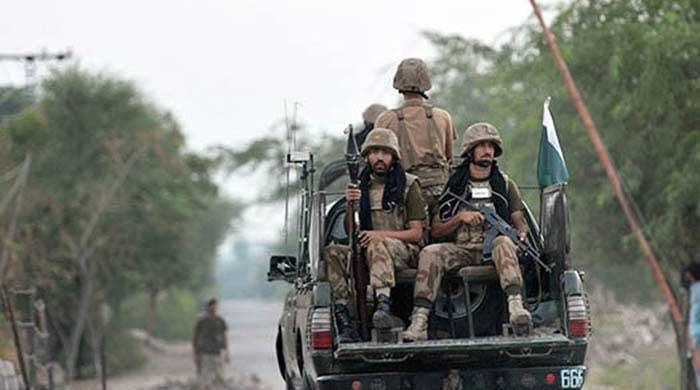Last week, southern Asia staggered on the edge of the catastrophe when India and Pakistan participated in four days of intense air attacks, reviving the fears of a nuclear confrontation among these long -standing rivals.
This more severe escalation since the 1971 war caused an urgent international action. On May 10, a high fire of the United States withdrew both nations from the edge, avoiding what could have been a devastating conflict. A 2019 study in scientific advances warned that a nuclear exchange between India and Pakistan could kill millions and trigger global climatic interruptions. The fragility of this truce, tarnished by mutual accusations, erroneous information and deeply rooted distrust, throws a shadow on the stability of the region.
The crisis began on April 22, 2025, when a terrorist attack in Pahalgam, occupied Kashmir, claimed the lives of dozens of tourists. India, attributing the attack on militants based in Pakistan, launched the Sindoor operation on May 7. Rafale aircraft bombarded objectives within Pakistan, with Indian officials who claim surgical precision against terrorist infrastructure. Pakistan, however, presented a different narrative, showing bombarded peoples and claiming civil deaths. The situation intensified even more on May 9, when the Indian media falsely reported that the Indian Navy had erased the port of Karachi and other Pakistani cities, claims later discredited but that inflated nationalist feelings and eroded the credibility of India abroad.
Erroneous information proved to be a powerful weapon in this conflict, amplifying the tensions and complicating the decalcalation efforts. Naval strikes manufactured reports on Karachi exemplify how uncontrolled narratives can boost public opinion and press governments in hard line positions. In an era in which social networks amplify falsehoods, such distortions run the risk of converting skirmishes into large -scale wars. All this only brings home the need for verifiable communication to counteract chaos planted by false news.
The United States intervened as a critical mediator when spiral conflict. The most alarming climbing of the conflict occurred with the strike of India on the Nur Khan air base of Pakistan in Rawalpindi, only 10 kilometers from Islamabad and near the Pakistani military headquarters. In a matter of hours, Pakistan launched a large -scale counteroffensive.
According to the Pakistani army, 26 Indian military facilities allegedly involved in strikes and Pakistani infrastructure were addressed. These included facilities of the Air Force and the Army in Suratgarh, Sirta, Adammpur, Bhuj, Naliya, Bathinda, Barnala, Harwara, Avantipur, Srinagar, Jammu, Mamoon, Ambala, Udhampur and Pathankot. Pakistan has claimed to have inflicted substantial damage.
After climbing, the Trump administration, initially hesitates to intervene, reversed in the midst of growing fears of nuclear conflict. The conversations culminated in the cessation of hostilities, marking a diplomatic advance, highlighting the ability of the United States to calm an imminent crisis.
While Pakistan publicly praised the efforts of the United States, India minimized Washington’s role. According to CNN, President Donald Trump announced Alto El Fuego on May 10, through Truth Social, accrediting US diplomacy for stopping violence and expressing hope of a long -term resolution, particularly on the subject of Kashmir. In particular, the high fire was unconditional, and the swing of the Indo waters remains suspended.
Despite this advance, the high fire remains dim. A few hours after the agreement, the Secretary of Foreign Affairs of India, Vikram Misri, accused Pakistan of drone and bombing incursions along the LOC, the positions to Pakistan denied vehementia. These accusations of Tit for OT are the lasting distrust that affects the relations between India-Pakistan. The insistence of India in treating Cashmiro as a bilateral theme, rooted in the 1972 Simla agreement, clashes with the reality of international participation, adding another layer of complexity to the peace process. Meanwhile, Pakistan’s dependence on J-10 combatants with Chinese supply, more than 50 of whom reinforce its Air Force, says a deeper strategic alignment with Beijing, a dynamic that disconnects New Delhi.
The former head of the Indian army, General Manoj Naravane, speaking in Pune on May 12, offered an alerting perspective about the conflict. He warned: “War is not romantic. It is not your Bollywood movie. It is a very serious business … we should not encourage it.” Naravane emphasized the deep human cost, particularly in civilians trapped in crossfire. He spoke of children who endured bombings, their trauma is a burden “carried through generations” and urged diplomacy as the “first option” on military action. His words resonate with the marked warnings of experts, who estimate that a nuclear war between these nations could devastate global food supplies for a decade.
The 2025 clash exposed the critical military disparities. The defense budget of $ 86 billion of India far exceeds the $ 10 billion of Pakistan, but its aerial defenses remain outdated, with only the modernized 24 percent. The smallest arsenal but backed by China in Pakistan, including the agile J-10 fighters, exploded these holes, surprising Indian bases with precision. The delay of India in military modernization contrasts with its ambitions as a regional power, while the Pakistan dependence of China runs the risk of entangling it in broader geopolitical rivalries. The nuclear capabilities of both nations, India, with more than 160 eyelets and Pakistan with a similar arsenal, amplify the bets, which makes the decalcage an urgent priority.
In order for the high support, India and Pakistan must go beyond temporary bruises. Relivating trade, detained since 2019, could build economic ties that deter hostility. Bilateral conversations, potentially facilitated by the United States, are essential to address the Kashmir and security concerns. International actors, including China, who pointed out the restriction through their global Times editorial, could reinforce stability. Without such steps, negotiated peace in the United States runs the risk of collapsing, reviving a conflict with the catastrophic potential.
The crisis of the Indian of May 2025 is a timely reminder of the volatility of southern Asia. The US intervention avoided the immediate disaster, but the peace of the region hangs by a thread, threatened by erroneous information, military brinkmanship and undeveloped complaints.
As General Naravane warned, war does not offer romance, only suffering and loss. Sustained diplomacy, based on mutual truth and interest, is the only way to avoid a return to the abyss. In a world where false news can turn on wars, both nations must prioritize restriction and dialogue to ensure a free future of the annihilation spectrum.
The writer is the former head of the emerging market investments of Citigroup and author of ‘The Gathering Storm’.
Discharge of responsibility: The views expressed in this piece are that of writer and do not necessarily reflect the editorial policy of PakGazette.TV.
Originally published in the news




